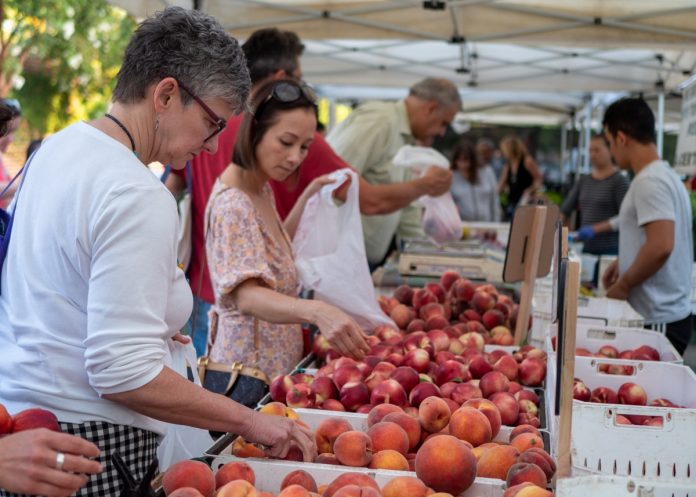South Pasadena, Pasadena, Alhambra and other San Gabriel Valley areas generally east of Figueroa St. are now within an expanded citrus quarantine zone that has been established in cooperation with federal, state and county agricultural agencies. The agencies are asking citizens not to take non-commercial or home-grown citrus outside the quarantine zone as to prevent the movement of a bacteria called Huanglongbing (HLB).
Also known as “citrus greening,” HLB is a plant disease that, while not harmful to humans or animals, is fatal to citrus trees. It is spread by pest called the Asian citrus psyllid, which feeds on citrus tree leaves. There is no cure.
Over the past year, a quarantine for HLB has been steadily expanded in the Southland as the bacteria has been detected in more and more areas. The quarantine zone now covers an area of over 1,200 square miles and includes portions of Los Angeles, Riverside, Orange and San Bernardino Counties.
Eating citrus fruit is safe; it is the transportation of citrus fruit that officials seek to constrain. Potted plants, cuttings, stems and leaves should not be taken outside quarantined area. However commercial fruit purchased at a grocery store is fine and can be moved.
A majority of California counties, predominately in the Southern part of the state, are currently under federal quarantine for HLB.
Keith Okasaki, an environmental scientist with the California Department of Agriculture, said the quarantine zone that the affected San Gabriel Valley areas are in has been in place for over two years.
He said there is no prospect the quarantine will ever be lifted, because it is not like the exotic fruit quarantines that regualrly occur in LA County which can be removed or otherwise treated. Although considerable sums are being spent on a scientific solution, so far none has been found.
Okasaki said the first HLB quarantine in California was declared in 2012.
Although the disease has devastated the citrus industry in places like Florida, the effects in California have been limited because all of the HLB detections in California to date have been on residential properties, not at any commercial grows. “So far the large citrus commercial areas are not impacted,” though the industry is concerned. There are no large commercial citrus growers in LA County, he also noted.
Here are some of the protocols for the quarantine as set out by the California Department of Food and Agriculture:
The quarantine prohibits the movement of all citrus nursery stock or plant parts out of the quarantine area. Provisions exist to allow the movement of commercially cleaned and packed citrus fruit. Fruit that is not commercially cleaned and packed, including residential citrus, such as oranges, lemons, grapefruits, and kumquats, must not be moved from the property on which it is grown, although it may be processed and/or consumed on the premises. Residents are urged to take several steps to help protect citrus trees:
- Do not move citrus plants, leaves, or foliage into or out of the quarantine area or across state or international borders. Keep it local.
- Cooperate with agricultural officials placing traps, inspecting trees, and treating for the pest.
- If you no longer wish to care for your citrus tree, consider removing it so it does not become a host to the pest and disease.
Checking Your Citrus Trees
It is estimated that over half of California residences have at least one fruit tree. The Asian citrus psyllid pest is most noticeable when new leaves are growing on the tips of the branches. Adults are small, brown pests that feed on the leaves with their body at a 45-degree angles. Young psyllids produce a white, waxy substance.
- If you think you have found the Asian citrus psyllid, report your findings to the California Department of Food and Agriculture at 800-491-1899.
- Don’t move citrus fruit or plant materials off of your property.
- Ask your local nursery about treatment options to help protect your trees from the Asian citrus psyllid.















.png)







